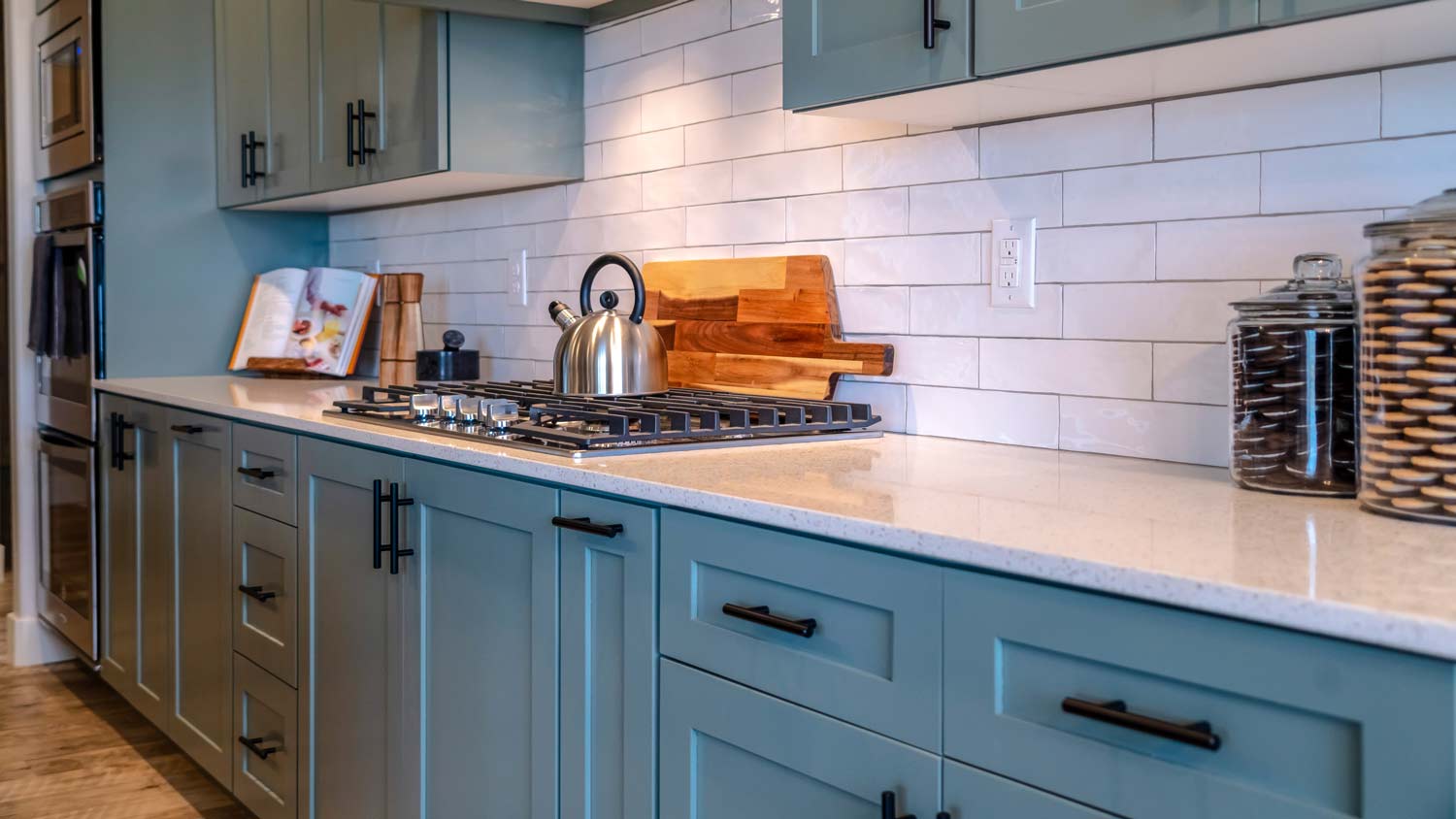
Discover the cost to stain cabinets, including average prices, key cost factors, and tips to help you budget and save on your cabinet staining project.
A little sweat equity goes a long way for this DIY project


If the paint on your kitchen or bathroom cabinets is peeling, don’t fret—there’s a good chance you can salvage them by learning how to strip paint from cabinets. It’s a DIY project that’s perfect for experienced or beginner DIYers since it doesn’t require a ton of tools or expensive supplies. If you’re willing to put in a little elbow grease, you can have cabinets with a clean surface in a day or two by following our guide.
The work of preparing to strip paint from cabinets is almost equally as important as the paint-stripping process itself. Follow these prep steps for a successful painting project.
The best way to protect your eyes, hands, and lungs while stripping paint is to wear protective gear such as gloves, a mask, and glasses or goggles. This step is especially important if you’re using a solution that is made with methylene chloride, which is a chemical that can burn your skin on direct contact.
Most paint-stripping solutions contain caustic chemicals that give off a strong odor, so you’ll want to set up a workstation in a well-ventilated area like a garage or outdoor area where other members of your household won’t be exposed. You will likely need a table to set the cabinet doors on and access to a sink or water hose.
Like the need to protect floors when painting, you’ll need to take measures to prevent floor damage from stripping paint. Whether your workstation is in a separate space or not, you’ll still need to put down a layer of paper or plastic on the floors and appliances in your kitchen so that they’re not affected if paint stripper goes astray when you’re applying it to the cabinet frames. You’ll also want to move your refrigerator away from the area, if possible, to avoid damage during the project.

Using your screwdriver, remove your cabinet doors and their hinges from the bases so that you can strip the paint on a flat surface. Once you remove all cabinet doors, lay them flat on a table and give each one a quick wipe down so that you’ll have a clean slate to apply the paint stripper on.
Put on your gloves, goggles, and mask and pour your paint stripper of choice into the paint pan. Take your paint brush and dip it into the pan, then brush a thick layer of the solution on your cabinet door. Repeat this process for each door, then repeat the steps on the cabinet frames in your kitchen.
If you’re pressed for time or want to speed up the lifting process, you can cover each cabinet door in wax paper. This method helps the paint evaporate and bubble up more quickly so you can get to the fun part—scraping!

After the paint starts to bubble up, remove the wax paper, then take your plastic scraper and begin scraping the old paint off of the cabinet door and frames. Make sure you use a plastic scraper and not a metal one, since metal can leave behind scratches that will affect the quality of the cabinets. If multiple layers of paint have been applied in the past, you may need to apply more paint stripper once you’ve scraped off a few layers.
Once you’ve stripped all of the paint off of the cabinet doors and frames, sand the surface of each down lightly with very fine grit (150 to 220) sandpaper. Then, clean them off with a wet washcloth and your favorite dish soap. Once all doors and frames have been sanded and rinsed off, they should have a clean slate for new paint or staining.
Stripping paint from cabinets is a manageable DIY project with the right tools, but it will cost your sweat equity and time commitment. If you want to ensure high-quality results for your cabinet makeover, consider hiring a cabinet painting company to do it for you. You can expect to pay around $90 an hour for labor, which can add up if you have a large kitchen or older doors with layers of paint to remove. The good news is that you can hire your local cabinet painter to both strip the paint and apply new coats of paint on top so that you can essentially bundle services and save on costs.
From average costs to expert advice, get all the answers you need to get your job done.

Discover the cost to stain cabinets, including average prices, key cost factors, and tips to help you budget and save on your cabinet staining project.

Discover the cost of resurfacing kitchen cabinets, including average prices, key cost factors, and tips to help you budget and save on your next kitchen update.

If you are wondering how to sand cabinets for painting, there are several ways to do it. We share the most effective sanding methods.

Discover the cost of glazing cabinets, including average prices, key cost factors, and tips to save on your cabinet glazing project.

We share the pros and cons of refacing kitchen cabinets so you can make the most of your remodeling budget. We also reveal a few alternatives to refacing.

You can bring your cabinets back to life without all the hassle. Here’s how to restore your kitchen cabinets without sanding or varnishing.